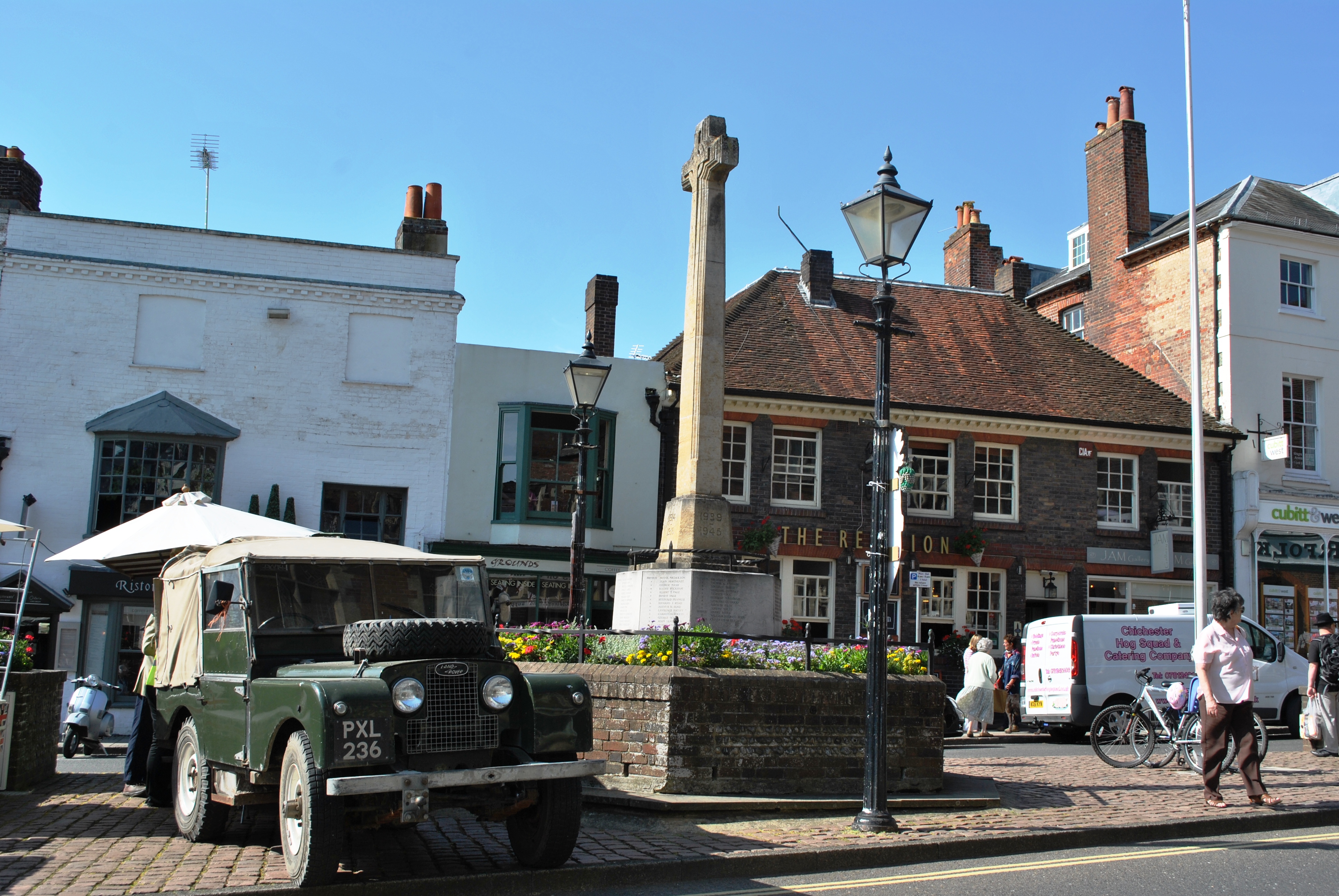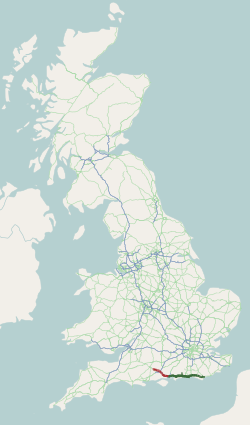|
Arundel
Arundel ( ) is a market town and civil parish in the Arun District of the South Downs, West Sussex, England. The much-conserved town has a medieval castle and Roman Catholic cathedral. Arundel has a museum and comes second behind much larger Chichester in its number of listed buildings in West Sussex. The River Arun runs through the eastern side of the town. Arundel was one of the boroughs reformed by the Municipal Reform Act 1835. From 1836 to 1889 the town had its own Borough police force with a strength of three. In 1974 it became part of the Arun district, and is now a civil parish with a town council. Name The name comes from the Old English ''Hārhūnedell'', meaning "valley of horehound", and was first recorded in the Domesday Book. Folk etymology, however, connects the name with the Old French word ''arondelle'', meaning "swallow", and swallows appear on the town's arms. Governance An electoral ward of the same name exists. This ward stretches north to Ho ... [...More Info...] [...Related Items...] OR: [Wikipedia] [Google] [Baidu] |
Arundel Castle
Arundel Castle is a restored and remodelled medieval castle in Arundel, West Sussex, England. It was established by Roger de Montgomery in the 11th century. The castle was damaged in the English Civil War and then restored in the 18th and early 19th centuries by Charles Howard, 11th Duke of Norfolk. Further restoration and embellishment was undertaken from the 1890s by Charles Alban Buckler for the 15th Duke. Since the 11th century, the castle has been the seat of the Earls of Arundel and the Dukes of Norfolk. It is a Grade I listed building. History The original structure was a motte-and-bailey castle. Roger de Montgomery was declared the first Earl of Arundel as the King granted him the property as part of a much larger package of hundreds of manors. Roger, who was a cousin of William the Conqueror William the Conqueror (Bates ''William the Conqueror'' p. 33– 9 September 1087), sometimes called William the Bastard, was the first Norman king of England (as ... [...More Info...] [...Related Items...] OR: [Wikipedia] [Google] [Baidu] |
River Arun
The River Arun () is a river in the English county of West Sussex. At long, it is the longest river entirely in Sussex and one of the longest starting in Sussex after the River Medway, River Wey and River Mole. From the series of small streams that form its source in the area of St Leonard's Forest in the Weald, the Arun flows westwards through Horsham to Nowhurst where it is joined by the North River. Turning to the south, it is joined by its main tributary, the western River Rother, and continues through a gap in the South Downs to Arundel to join the English Channel at Littlehampton. It is one of the faster flowing rivers in England, and is tidal as far inland as Pallingham Quay, upstream from the sea at Littlehampton. The Arun gives its name to the Arun local government district of West Sussex. The first major improvements to the river were made between the 1540s and the 1570s, when Arundel became a port, and navigation up to Pallingham was improved, but barges ha ... [...More Info...] [...Related Items...] OR: [Wikipedia] [Google] [Baidu] |
Arundel Cathedral
The Cathedral Church of Our Lady and St Philip Howard is located in Arundel, West Sussex, England. Dedicated in 1873 as the Catholic parish church of Arundel, it became a cathedral at the foundation of the Diocese of Arundel and Brighton in 1965. It now serves as the seat of the Bishop of Arundel and Brighton. It is classified by Historic England as a Grade I listed building (buildings of exceptional interest). History The cathedral's location, construction, design, and dedication owe much to the Howard family, who, as Dukes of Norfolk and Earls of Arundel are the most prominent English Catholic family, and rank first (below the royal family) in the Peerage of England. Since 1102 the seat of the Howards' ancestors has been Arundel Castle. In 1664, Catholic worship was suppressed in England by the Conventicle Act, and all churches and cathedrals in England were transferred to the Church of England. With the Roman Catholic Relief Act 1829, the foundation of Catholic parishes ... [...More Info...] [...Related Items...] OR: [Wikipedia] [Google] [Baidu] |
Arundel And South Downs (UK Parliament Constituency)
Arundel and South Downs () is a Constituencies of the Parliament of the United Kingdom, constituency in West Sussex created in 1997 and represented in the House of Commons of the United Kingdom, House of Commons of the UK Parliament by Andrew Griffith, a Conservative Party (UK), Conservative, since 2019 United Kingdom general election, 2019. Constituency profile This is a mostly rural constituency including the town of Arundel and small towns and villages within the South Downs national park boundaries or encircled by the park, the largest of which are Midhurst, Petworth, Pulborough, Steyning and Storrington. Residents' incomes and house prices are significantly wealthier than the UK averages. Boundaries 1997–2010: Following their Fifth Periodic Review of Westminster constituencies, review of parliamentary boundaries in West Sussex which Parliament approved in 1995, the Boundary Commission for England formed new constituencies. As created in 1997, the seat was constituted as ... [...More Info...] [...Related Items...] OR: [Wikipedia] [Google] [Baidu] |
Arundel Town Hall
Arundel Town Hall is a municipal building in Maltravers Street in Arundel, West Sussex, England. The building, which is the meeting place of Arundel Town Council, is a Grade II listed building. History The first town hall in Arundel was located in the middle of High Street near the junction with Tarrant Street and dated back at least to the mid-16th century. After it became dilapidated, it was demolished in around 1741. In the early 1830s, the mayor, Arthur Atherley, facilitated an arrangement whereby Bernard Howard, 12th Duke of Norfolk would commission a new town hall for the borough in return for the borough giving up its interest in the Fitzalan Chapel, which formed the chancel of the Church of St Nicholas in the western grounds of Arundel Castle. The new building was designed by Robert Abraham in the Norman style, built in knapped flint with galleting and ashlar finishings and was opened in time for a civic meeting in March 1838. The design involved a symmetrical main ... [...More Info...] [...Related Items...] OR: [Wikipedia] [Google] [Baidu] |
A27 Road
The A27 is a major road in England. It runs from its junction with the A36 road, A36 at Whiteparish (near Salisbury, England, Salisbury) in the county of Wiltshire, follows the south coast of Hampshire and West Sussex, and terminates at Pevensey (near Eastbourne and Bexhill-on-Sea, Bexhill) in East Sussex. It is the westernmost road in Zone 2 roads in the UK, Zone 2 in the UK road numbering system. Between Portsmouth and Lewes, it is one of the busiest trunk roads in the UK. History Historically, for longer distance movement along the south coast, the M25 in combination with the M2, M20, M23 / A23, A3 / A3(M) and M3 has provided an attractive alternative to the actual south coast route of A259, A27 and M27. In 2002 an offpeak journey between Margate and Southampton via the M25 took 2 hours 30 minutes, and via the coastal route using the A259, A27 and M27 took 3 hours 50 minutes. The reason the coastal route is so much slower than the M25 alternative is largely due to a series ... [...More Info...] [...Related Items...] OR: [Wikipedia] [Google] [Baidu] |
West Sussex
West Sussex is a Ceremonial counties of England, ceremonial county in South East England. It is bordered by Surrey to the north, East Sussex to the east, the English Channel to the south, and Hampshire to the west. The largest settlement is Crawley, and the county town is the city of Chichester. The county has a land area of and a population of . Along the south coast is a near-continuous urban area which includes the towns of Bognor Regis (63,855), Littlehampton (55,706), and Worthing (111,338); the latter two are part of the Brighton and Hove built-up area, which extends into East Sussex and has a total population of 474,485. The interior of the county is generally rural; the largest towns are Crawley (118,493) and Horsham (50,934), both located in the north-east; Chichester is in the south-west and has a population of 26,795. West Sussex contains seven local government Non-metropolitan district, districts, which are part of a two-tier non-metropolitan county administered by ... [...More Info...] [...Related Items...] OR: [Wikipedia] [Google] [Baidu] |
Arun District
Arun is a non-metropolitan district, local government district in West Sussex, England. Its council is based in Littlehampton. The district's other towns are Arundel and Bognor Regis. The district is named after the River Arun, which runs through the centre of the district. Parts of the district fall within the South Downs National Park. The district is on the coast, facing the English Channel. The neighbouring districts are Chichester District, Chichester, Horsham District, Horsham, Adur District, Adur and Worthing. History Arun district was formed on 1 April 1974 under the Local Government Act 1972 as one of seven districts within West Sussex. The new district covered the whole area of three former districts and parts of another two, all of which were abolished at the same time: *Arundel Municipal Borough *Bognor Regis Urban district (England and Wales), Urban District *Chichester Rural District (part, being the parishes of Aldingbourne, Barnham, West Sussex, Barnham, Bersted ... [...More Info...] [...Related Items...] OR: [Wikipedia] [Google] [Baidu] |
Littlehampton
Littlehampton is a town, seaside resort and civil parish in the Arun District of West Sussex, England. It lies on the English Channel on the eastern bank of the mouth of the River Arun. It is south south-west of London, west of Brighton and east of Chichester. The parish covers an area of . The suburban area of the town has a population of approximately 55,000. The conurbation includes other settlements: Wick, West Sussex, Wick in the north west; Lyminster to the north; and Rustington to the east. Wick and Toddington, which has a large business park, became part of the town in 1901. Nearby towns include Bognor Regis to the west and Worthing to the east. The town is also the westernmost settlement of the List of urban areas in the United Kingdom, 15th largest urban area in England and Wales, the Brighton/Worthing/Littlehampton conurbation, a region encompassing 474,485 people (2011 census). The South Downs National Park commences north of the town: Littlehampton links to Am ... [...More Info...] [...Related Items...] OR: [Wikipedia] [Google] [Baidu] |




